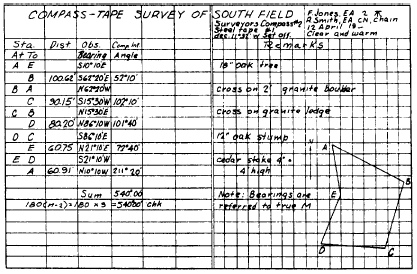This year marks my 50th anniversary in the surveying profession, but don’t worry—this isn’t one of those blogs about the halcyon days.
First of all, some things weren’t all that good. We had to rely on paper, specifically the field book. When, in subsequent years, I taught surveying the taking of proper field notes was always a part of the course of study. The task of taking proper field notes was never trivial and using pencil and paper or, in some cases pen and paper, to record information that adequately represented the measurements, attributes, and conditions observed in the field had specific rules. Field notes had to be taken in the field, not elsewhere. Erasures were forbidden. They must record what the scrivener actually observed, not what he expected to observe. Sketches could be used to clarify.
There were many more rules, formats, and proscribed methods that were widely held, and some applied to only a particular kind of work. Nevertheless, the objective was always the same: The creation of a faithful record of a particular place at a particular moment. The upshot was an extensive library of field books that stood on shelf after shelf in nearly every shop. They went back many years so they could be called upon to remind, justify, or support the recreation of the places and moments recorded in them.
An unavoidable downside to these notes on paper was, and still is, that it is necessary to reproduce them by hand in other formats. In the days when draftsmen produced drawings on linen, mylar, paper, and other media by hand this transcription was unavoidable. When computer aided drafting replaced the old methods of drawing, keying in information from paper field notes became less rational and electronic data loggers became more common. Now that the deliverables are not drawings at all but databases, imagery, point clouds, 3 and 4 dimensional digital models that are nearly indistinguishable from the real world, I suggest that paper field notes are an irrational pediment.
The quantity and complexity of information that can be efficiently captured with current technology far outstrips that of in decades past, yet paper notes persist. I hesitate to call them field notes, as they are not often collected in the field. Some reasons for this persistence stem from outmoded legacy systems that consume geospatial data downstream. This, in my opinion, is a poor reason to cling to an archaic method.
I submit that the contemporary data path that flows from the field to the geospatial deliverable should be as unencumbered by manual intervention as possible.
While there are various methods of recording field data today, at some point along the data path the information recorded become digital. This is true of all field data recordation methods, including paper notes, which require at least two manual steps to reach a digital form and often more. With each step of handwork the data flow slows, costs rise, and errors creep in.
If one uses electronic data collectors in the field, these also require manual keying for data entry. However, if the data path is properly configured, there is only one manual step.
There are other modern methods of field data collection with the capacity to capture observations, measurements and attributes with no manual steps at all and are, therefore, the harbingers of the future.






